|
|
|
Sort Order |
|
|
|
Items / Page
|
|
|
|
|
|
|
| Srl | Item |
| 1 |
ID:
166686
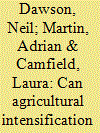

|
|
|
|
|
| Summary/Abstract |
Market-oriented agricultural intensification is a major development strategy, yet its alignment with sustainable development goals (SDGs) is unclear. We apply indicators for SDG 2 (eradicate hunger) regarding income, food production, food security and land tenure to recent intensifications in Rwanda and Laos to reveal their disaggregated impacts. We find while market-oriented intensification may generate poverty reduction, it also exacerbated marginalisation and poverty through various forms of land tenure insecurity. Ethnicity and gender were influential factors in Rwanda, and post-conflict resettlement policies in Laos. We discuss implications for development practice and selection of suitable indicators to reflect the ambition of the SDGs.
|
|
|
|
|
|
|
|
|
|
|
|
|
|
|
|
| 2 |
ID:
184452
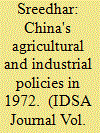

|
|
|
| 3 |
ID:
132779


|
|
|
|
|
| Publication |
2014.
|
| Summary/Abstract |
Simultaneous rapid rise in both the world oil and agricultural commodity prices have increased interest in determining price transmission from oil prices to those of agricultural commodities. However, although a lot of the empirical research has studied the relation between oil price changes and economic activity, it is surprising that little research has been conducted on the relationship between oil price shocks and the large-size emerging industrial countries agricultural market. Therefore, the main goal of this study is that we are try to use the more detail and new China's weekly data which from 2004/9 to 2012/9 to fill this gap. This study examines the short and long-run interdependence between China fuel oil prices and the average of different kinds of key agricultural commodity prices in China. To this end, the Toda-Yamamoto causality approach and impulse response analysis method are applied to identification of the long and short-run interrelationships. In contrast to lots of the traditional causality analysis indicates that the oil prices and the agricultural commodity prices do not influence each other, our result is mix: we have inferred that the fluctuation of fuel oil price has a short-run effect on the dynamics of agricultural products in China; however, there are no significant in the long-run effects.
|
|
|
|
|
|
|
|
|
|
|
|
|
|
|
|
| 4 |
ID:
168238
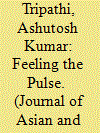

|
|
|
|
|
| Summary/Abstract |
Rising price of pulses is a matter of great concern for nutrition in India, which is home to the largest number of malnourished people in the world. The paper outlines policy strategies that can help in increasing the production of pulses and thereby making it available at affordable prices. The paper looks into neglect of pulses in agriculture policies that hampers farmers’ incentives to promote investment, technology and productivity. The analysis suggests for better incentives to farmers growing pulses in the form of higher minimum support prices, reflecting the true economic benefit of growing pulses coupled with a strong procurement network across the country. An action on technological front with focus on increasing yield levels thereby, reducing cost of production can be a game changer in pulse production.
|
|
|
|
|
|
|
|
|
|
|
|
|
|
|
|
| 5 |
ID:
170094
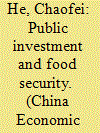

|
|
|
|
|
| Summary/Abstract |
This paper examines the causal effect of public investment on food output by exploiting a panel dataset covering a large central government program (Hundred Billion Plan) in China from 2007 to 2013. Based on an event study methodology, we find that public investment significantly increases food output by 4.34%. We find that the sources of the policy effect come mainly through improving productivity, which is driven by increases in fertilizer inputs by households and by the crowding in local government agricultural investments. Further, an ad-hoc benefit-cost analysis shows that the internal return rate (IRR) is 0.23% over a 20-year period. Our results are robust in terms of the assumption of parallel trends, the confounding effect from an alternative policy, the nonrandom selection issue of policy implementation, the inclusion of alternative sets of control variables, the treatment of outliers and the omitted variable biases.
|
|
|
|
|
|
|
|
|
|
|
|
|
|
|
|
| 6 |
ID:
029667
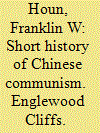

|
|
|
|
|
| Publication |
Englewood Cliffs, Prentice-Hall Inc., 1967.
|
| Description |
viii, 245p.pbk
|
|
|
|
|
|
|
|
|
|
|
|
Copies: C:1/I:0,R:0,Q:0
Circulation
| Accession# | Call# | Current Location | Status | Policy | Location |
| 000447 | 951.04/HOU 000447 | Main | On Shelf | General | |
|
|
|
|
| 7 |
ID:
189308
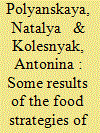

|
|
|
|
|
| Summary/Abstract |
This article presents a comparative macroeconomic analysis of the results of agricultural policy in the area of food security in Russia. China, and Japan. Russia has a lot more agricultural land - a factor of basic importance in food production - than its eastern neighbors China and Japan. China is the leader in terms of gross agricultural production, especially in cereal crops and grain legumes, stone fruits, berries, citrus fruits and grapes, vegetables, melons and gourds, as well as eggs. With respect to those products, China has complete self-sufficiency, but at the same time, the country experiences shortages in its own production of potatoes, meat, and milk. Japan cannot fully supply its own stone fruits, berries, citrus fruits and grapes, vegetables, melons and gourds, as well as meat and milk. Russia also has a shortage in its production of those products, with the exception of meat, of which it has ample supply. The average Russian citizen does not consume enough vegetables, melons and gourds, as well as milk and dairy products, for which there is a low level of self-sufficiency and economic accessibility in the country.
|
|
|
|
|
|
|
|
|
|
|
|
|
|
|
|
| 8 |
ID:
130297
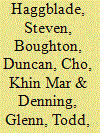

|
|
Strategic choices shaping agricultural performance and food sec
/ Haggblade, Steven; Boughton, Duncan; Cho, Khin Mar; Denning, Glenn, Todd, Renate Kloeppinger, Oo, Zaw, Sandar, Tun Min, Than, tin Maung, Wai, Naw Eh Mwee Aye, Wilson, Shannon, Win, Ngu Wah, Wong, Larry C
|

|
|
|
|
| Publication |
2014.
|
| Summary/Abstract |
Despite the many transformations taking place in Myanmar, its agricultural sector is lagging. A high proportion of rural households remain poor and food insecure as s result. This article examines the underlying cause of poor agricultural performance through a combination of literature and secondary data review combined with extensive field.
|
|
|
|
|
|
|
|
|
|
|
|
|
|
|
|
|
|
|
|
|